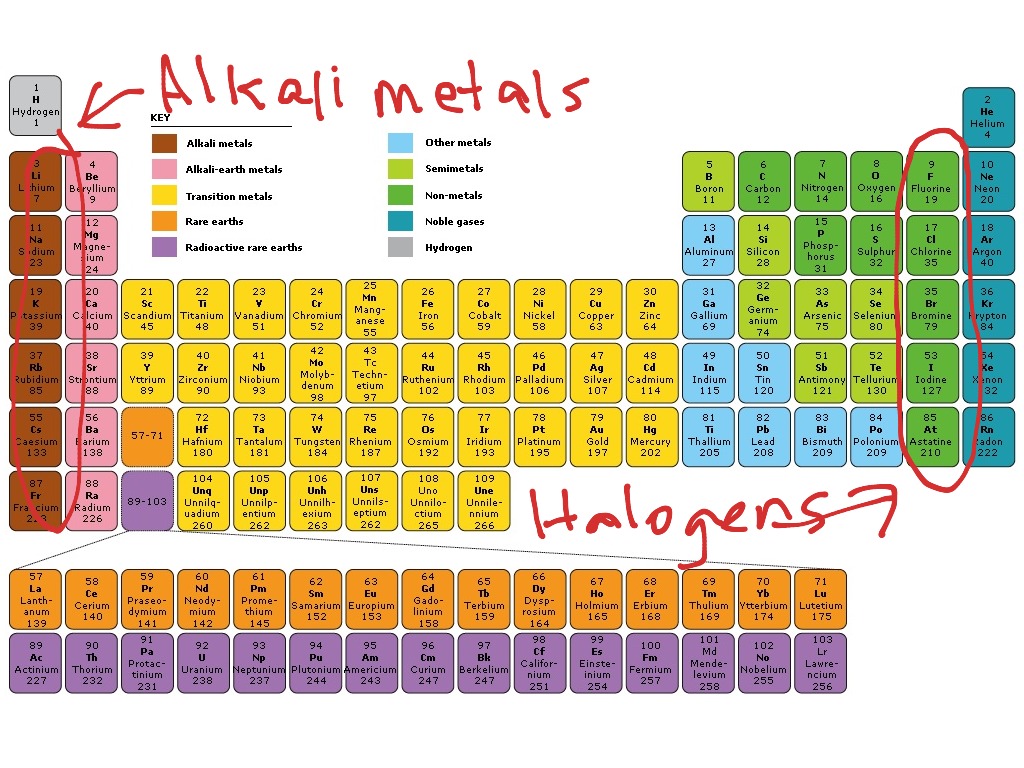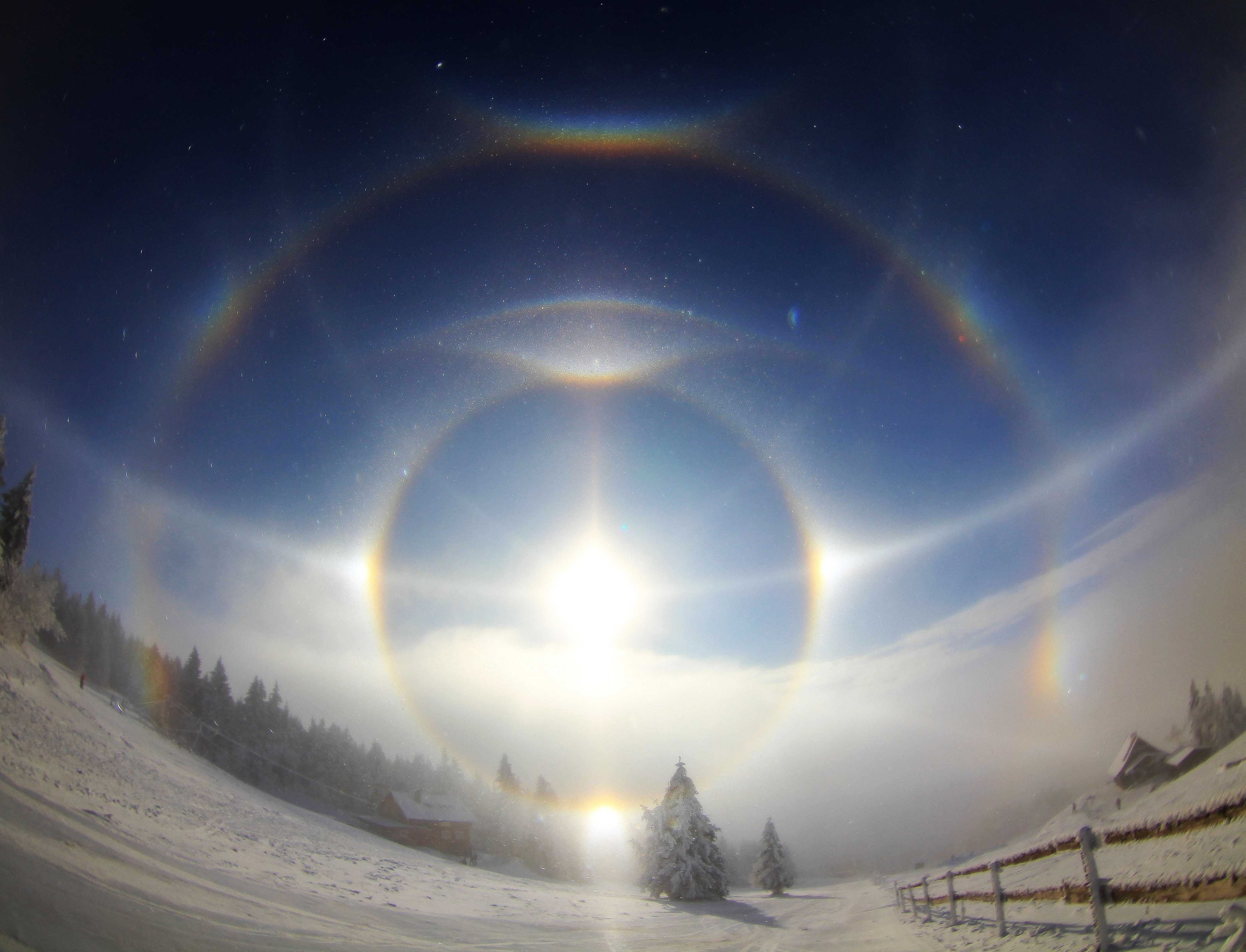The group of halogens is the only periodic table group that contains elements in three of the main states of matter at standard temperature and pressure. Xenon is a noble gas that has the symbol xe.
What Is The Definition Of Halogens, The halogen elements are fluorine, chlorine, bromine, iodine, astatine, and possibly tennessine. Halogen used as a noun is very rare.

Halogens are highly chemically reactive. The halogens are highly reactive nonmetallic elements. They form oxoacids in four different types with general formula (hox). Definition of halogen (entry 2 of 2) :
Fluorine, chlorine, bromine, iodine, and astatine.
Many, however, are common in combination with other elements here is a look at the identity of these elements, their location on the periodic table, and their common. A halogen is a chemical element that forms a salt when it reacts with metal. The halogen elements are fluorine, chlorine, bromine, iodine, astatine, and possibly tennessine. Halogens are found in the environment only in the form of ions or compounds, because of. Chlorine, bromine and iodine are the three common group 7. Many, however, are common in combination with other elements here is a look at the identity of these elements, their location on the periodic table, and their common.
 Source: slideserve.com
Source: slideserve.com
Halogens are found in the environment only in the form of ions or compounds, because of. Any of the five elements fluorine, chlorine, bromine, iodine, and astatine that form part of group viia of the periodic table and exist in the free state normally as diatomic molecules. Any of five related nonmetallic elements (fluorine or chlorine or bromine or iodine.
 Source: showme.com
Source: showme.com
Halogens are highly chemically reactive. Fluorine and chlorine are the “poster children” of the halogens. The group of halogens is the only periodic table group that contains elements in three of the main states of matter at standard temperature and pressure. Xenon is in the group 8 of the periodic table. The halogens are highly reactive nonmetallic elements.
 Source: slideshare.net
Source: slideshare.net
In fact, halogens are so reactive that they do not occur as free elements in nature. Halogens are highly chemically reactive. The halogen elements are fluorine (f), chlorine (cl), bromine (br), iodine (i), astatine (at), and tennessine (ts). Halogens a family of nonmetallic, generally electronegative, elements that form group 17 (formerly group viia) of the periodic table. All of the.
 Source: slideserve.com
Source: slideserve.com
Variable noun [oft n n] a halogen is one of a group of chemical elements that includes chlorine, fluorine, and iodine. Halogens are in the group 7 of the periodic table. Fluorine and chlorine are the “poster children” of the halogens. What is the definition of halogen? Most halogens are typically produced from minerals or salts.
 Source: showme.com
Source: showme.com
The halogens are bromine, chlorine, fluorine, iodine, and astatine. In particular, studies of the interactions of molecular. Most halogens are typically produced from minerals or salts. Oxoacids of halogen are compounds that contain at least one oxygen, hydrogen and no less than one other halogen (group 17 elements include fluorine, chlorine, bromine, iodine, and astatine which are known as halogens)..
 Source: thoughtco.com
Source: thoughtco.com
The elements fluorine, chlorine, bromine, iodine, astatine. Fluorine and chlorine are the “poster children” of the halogens. Chlorine, bromine and iodine are the three common group 7. They form oxoacids in four different types with general formula (hox). Halogen used as a noun is very rare.
 Source: thoughtco.com
Source: thoughtco.com
Fluorine and chlorine are the “poster children” of the halogens. Most halogens are typically produced from minerals or salts. Group in the periodic table. Halogen refers to the chemical elements in the group 7 of the periodic table of elements. Xenon is in the group 8 of the periodic table.
 Source: byjus.com
Source: byjus.com
Fluorine and chlorine are the “poster children” of the halogens. Halogens a family of nonmetallic, generally electronegative, elements that form group 17 (formerly group viia) of the periodic table. In fact, halogens are so reactive that they do not occur as free elements in nature. The elements fluorine, chlorine, bromine, iodine, astatine. The group of halogens is the only periodic.
 Source: aim2destiny.blogspot.com
Source: aim2destiny.blogspot.com
The halogens are highly reactive nonmetallic elements. The halogens are bromine, chlorine, fluorine, iodine, and astatine. • halogen (noun) the noun halogen has 1 sense: 1).although this interaction is a relative newcomer to the supramolecular chemistry arena, it has a long history. They form oxoacids in four different types with general formula (hox).
 Source: breakingatom.com
Source: breakingatom.com
The halogen elements are fluorine, chlorine, bromine, iodine, astatine, and possibly tennessine. The halogens are the elements in group 17 of the periodic table. Group in the periodic table. Containing, using, or being a halogen a halogen lamp other words from halogen more example sentences learn more about halogen Halogen used as a noun is very rare.
 Source: slideserve.com
Source: slideserve.com
The group of halogens is the only periodic table group that contains elements in three of the main states of matter at standard temperature and pressure. Halogens synonyms, halogens pronunciation, halogens translation, english dictionary definition of halogens. The halogens, aka halogen family, are a group of reactive elements in group 17 of the periodic table, to the right of the.

The halogens, aka halogen family, are a group of reactive elements in group 17 of the periodic table, to the right of the chalcogens, and to the left of the noble gases. Any of the five elements fluorine, chlorine, bromine, iodine, and astatine that form part of group viia of the periodic table and exist in the free state normally.
 Source: thoughtco.com
Source: thoughtco.com
Fluorine and chlorine are the “poster children” of the halogens. The halogens are bromine, chlorine, fluorine, iodine, and astatine. Halogen definition, any of the electronegative elements, fluorine, chlorine, iodine, bromine, and astatine, that form binary salts by direct union with metals. Halogens are found in the environment only in the form of ions or compounds, because of. Group in the.
 Source: sciencenotes.org
Source: sciencenotes.org
Halogen used as a noun is very rare. 1).although this interaction is a relative newcomer to the supramolecular chemistry arena, it has a long history. Any of the five elements fluorine, chlorine, bromine, iodine, and astatine that form part of group viia of the periodic table and exist in the free state normally as diatomic molecules. (entry 1 of 2).
 Source: transuranic-elements.wikia.com
Source: transuranic-elements.wikia.com
All of the halogens form acids when bonded to hydrogen. Halogens are in the group 7 of the periodic table. Halogens are often used in lighting and heating devices. Any of five related nonmetallic elements (fluorine or chlorine or bromine or iodine or astatine) that are all monovalent and readily form negative ions familiarity information: What is the definition of.
 Source: youtube.com
Source: youtube.com
Any of five related nonmetallic elements (fluorine or chlorine or bromine or iodine or astatine) that are all monovalent and readily form negative ions familiarity information: What is the definition of halogen? There are five halogens in the periodic table of chemical elements: Halogen used as a noun is very rare. Halogens a family of nonmetallic, generally electronegative, elements that.
 Source: pt.slideshare.net
Source: pt.slideshare.net
Halogen lamps are illuminated by bulbs that contain a halogen and an inert gas. The artificially created element 117 may also be a halogen. Halogens are in the group 7 of the periodic table. Halogens are highly chemically reactive. In fact, halogens are so reactive that they do not occur as free elements in nature.
 Source: kittyskatering.com
Source: kittyskatering.com
The artificially created element 117 may also be a halogen. Halogen as a noun means any of a group of five chemically related nonmetallic elements including fluorine, chlorine, bromine, iodine, and astati. A halogen is a chemical element that forms a salt when it reacts with metal. In particular, studies of the interactions of molecular. Halogen used as a noun.
 Source: youtube.com
Source: youtube.com
Halogen refers to the chemical elements in the group 7 of the periodic table of elements. The halogens are bromine, chlorine, fluorine, iodine, and astatine. • halogen (noun) the noun halogen has 1 sense: Fluorine, chlorine, bromine, iodine, and astatine. There are six halogens, the last two are highly.
 Source: byjus.com
Source: byjus.com
Halogens are highly chemically reactive. Many, however, are common in combination with other elements here is a look at the identity of these elements, their location on the periodic table, and their common. In particular, studies of the interactions of molecular. The halogens are bromine, chlorine, fluorine, iodine, and astatine. There are five halogens in the periodic table of chemical.

The group 7 elements are called the halogens. Many, however, are common in combination with other elements here is a look at the identity of these elements, their location on the periodic table, and their common. (entry 1 of 2) : Halogen used as a noun is very rare. Containing, using, or being a halogen a halogen lamp other words.
 Source: youtube.com
Source: youtube.com
• halogen (noun) the noun halogen has 1 sense: All of the halogens form acids when bonded to hydrogen. The term halogen is used to refer to each of the six chemical elements that are part of group 17 of the periodic table, and are the following: Freebase (5.00 / 1 vote) rate this definition: There are six halogens, the.

The halogen elements are fluorine (f), chlorine (cl), bromine (br), iodine (i), astatine (at), and tennessine (ts). Halogens are highly chemically reactive. Halogen, any of the six nonmetallic elements that constitute group 17 (group viia) of the periodic table. Xenon is in the group 8 of the periodic table. Halogen definition, any of the electronegative elements, fluorine, chlorine, iodine, bromine,.
 Source: chem.ucla.edu
Source: chem.ucla.edu
The artificially created element 117 may also be a halogen. Halogen definition, any of the electronegative elements, fluorine, chlorine, iodine, bromine, and astatine, that form binary salts by direct union with metals. Oxoacids of halogen are compounds that contain at least one oxygen, hydrogen and no less than one other halogen (group 17 elements include fluorine, chlorine, bromine, iodine, and.
 Source: chemistrypage.in
Source: chemistrypage.in
The elements fluorine, chlorine, bromine, iodine, astatine. Oxoacids of halogen are compounds that contain at least one oxygen, hydrogen and no less than one other halogen (group 17 elements include fluorine, chlorine, bromine, iodine, and astatine which are known as halogens). In the modern iupac nomenclature, this group is known as group 17. Xenon is in the group 8 of.








